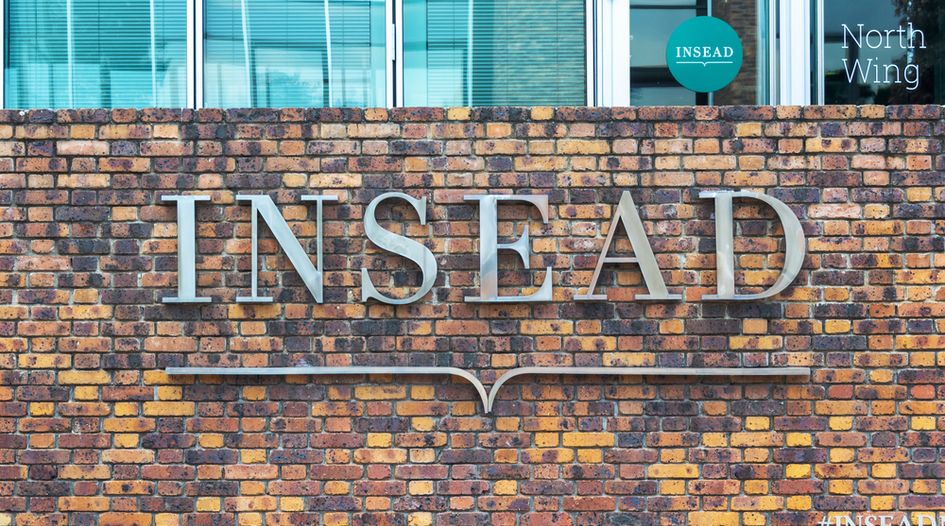Trademarks Registry’s inconsistent approach to examination exposed in phonetic similarity dispute

The Delhi High Court has been coming down heavily on the Indian IP Office in recent years, highlighting gaps in how it functions and directing it towards course correction. On 17 May 2023, the court passed an order in Institut Européen d'Administration des Affaires, INSEAD Association v Full Stack Education Private Ltd (CO COMM IPD-TM, 1/2021), instructing the Trademarks Registry to conduct both a word mark search and a phonetic search when examining a trademark application.
Background
The plaintiff – INSEAD – is a prestigious international business school that was founded in 1957. With campuses across Europe, Asia and the Middle East, it has cultivated a strong reputation for delivering high-quality MBAs and executive education programmes.
The defendant also runs a business school called the International School of AI and Data Science (INSAID), although it is a relatively new player in the education sector.
Both parties have obtained registrations for their logos, which are compared below. The plaintiff also possesses a registration for the word mark INSEAD since August 2007 – much earlier than the defendant’s logo mark, which was registered in 2020 with a use claim since December 2018.
Figure 1
.png?VersionId=QJSm2ysOuieXj3pIiQhhvSWbIqc8i22b)
The plaintiff’s grievance was that the acronym ‘INSAID’ is deceptively similar to its registered mark INSEAD – in fact, they are phonetically indistinguishable. Since the plaintiff enjoys priority in terms of both registration and use, it was aggrieved by the defendant’s registration and use, so it filed a rectification application against the latter’s mark. The plaintiff also submitted an email to the record from a student, who claimed that upon becoming confused, he erroneously attended a programme run by the defendant instead of the plaintiff.
The defendant claimed that the rival marks were not phonetically similar. It contended that the plaintiff’s mark is three syllables (‘in’, ‘se’ and ‘ad’), whereas INSAID is a two-syllable mark (‘in’ and ‘said’). It also argued that students seeking entrance into such educational institutions are well educated and, thus, there would be little or no likelihood of confusion.
Phonetic search for prior rights
One noteworthy contention that the plaintiff raised was that the defendant’s mark was registered in violation of Rule 33(1) of the 2017 Trademark Rules, which mandates that the Trademarks Registry conduct a search of prior similar or identical marks. To support its claim, the plaintiff presented evidence of a phonetic search carried out on the registry's website, revealing that its prior INSEAD mark was listed when a search was conducted. However, the court’s inquiry into this revealed that the registry had not actually conducted a phonetic search; it had only performed a search for visually or textually similar word marks and had accepted the defendant’s mark.
The registry’s website offers a phonetic public search feature that allows anyone to search for trademarks based on pronunciation. While the Trademarks Act and Rules do not explicitly outline the specific types of searches that the registry should conduct, a draft Trademarks Manual – which is in the works and available here (see page 43) – specifies that during the examination of applications for relative grounds of refusal, a search is performed using the Trademarks System, which offers three search modes:
- word mark search;
- phonetic search; and
- device mark search.
The manual further clarifies that in a phonetic search, the examiner can specify one or two phonetic variants of a trademark, and the system will retrieve all previously registered trademarks that exhibit phonetic similarities. It is surprising, then, that the registry did not utilise this feature and instead accepted the defendant’s mark without objections.
However, the plaintiff’s Rule 33(1) argument was not taken into account, as neither party could cite express guidelines towards the conducting of such searches. Therefore, the court held that the defendant’s registration could not be invalidated for the sole reason that the initial search was not properly conducted. However, the court did direct the registry to henceforth conduct both a word-mark and a phonetic search when it receives a registration application.
Having analysed all of the evidence, the court still went on to rule in favour of the plaintiff. It held that the marks INSEAD and INSAID were indeed similar, as were their services and business interests. Therefore, there was a likelihood of confusion among the public. The court also observed that the mere fact that consumers who seek admission to such institutions are well educated was no guarantee against the likelihood of confusion between the two marks, as “initial interest confusion” must be taken into account. The registration of the defendant’s mark was thus quashed.
Looking ahead
This case highlights the Trademarks Registry’s inconsistent approach to examining applications. It is to be hoped that in future a comprehensive evaluation in phonetic similarity cases will take place at the registry, leading to the adoption of a more standardised approach to analysing trademark applications.
This is an Insight article, written by a selected partner as part of WTR's co-published content. Read more on Insight
Copyright © Law Business ResearchCompany Number: 03281866 VAT: GB 160 7529 10

